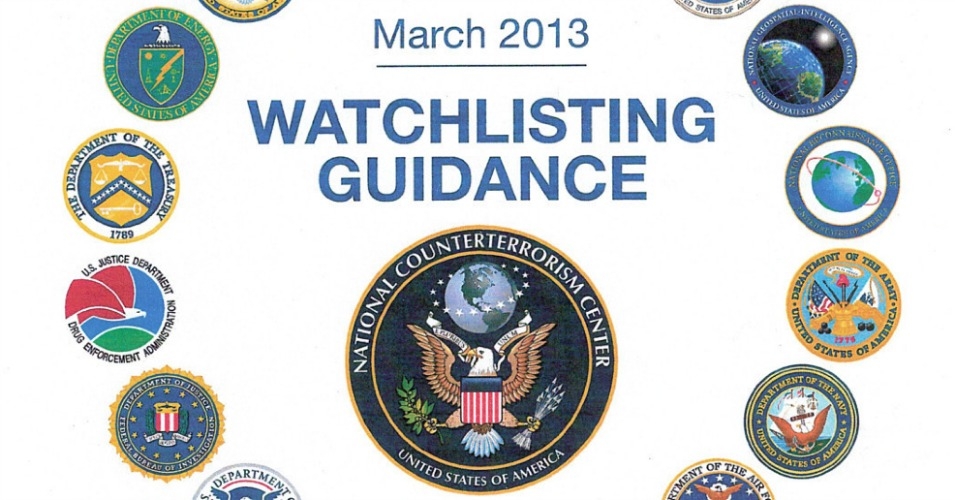Published on Wednesday, July 23, 2014 by Common Dreams
by Lauren McCauley, staff writer
“A source within the intelligence community” has leaked the government’s secret guidebook to how it adds names to and manages its controversial terrorist “watchlist” and was published in full by The Intercept on Wednesday.
Reported by Jeremy Scahill and Ryan Devereaux, the 166-page document (pdf) issued by the National Counterterrorism Center—and titled “March 2013 Watchlisting Guidance”—details the most up-to-date government rules for placing individuals on their main terrorism database, as well as the no-fly list and selectee list. It was developed by representatives from the nation’s top military and intelligence bodies including the Pentagon, CIA, NSA, and FBI.
According to the report, in 2013 the Obama administration “quietly approved a substantial expansion” of the watchlist system, “authorizing a secret process that requires neither ‘concrete facts’ nor ‘irrefutable evidence’ to designate an American or foreigner as a terrorist.” It was developed behind closed doors by representatives of the nation’s intelligence, military, and law-enforcement establishment, including the Pentagon, CIA, NSA, and FBI.
Scahill and Devereaux report that the guidelines permit “the elastic concept of ‘reasonable suspicion’ as a standard for determining whether someone is a possible threat.”
They continue:
The document’s definition of “terrorist” activity includes actions that fall far short of bombing or hijacking. In addition to expected crimes, such as assassination or hostage-taking, the guidelines also define destruction of government property and damaging computers used by financial institutions as activities meriting placement on a list. They also define as terrorism any act that is “dangerous” to property and intended to influence government policy through intimidation.
This combination—a broad definition of what constitutes terrorism and a low threshold for designating someone a terrorist—opens the way to ensnaring innocent people in secret government dragnets.
Moreover, the government tracks both “known terrorists” and “suspected terrorists,” allowing individuals to be placed on the list even if they are suspected of associating with potential terrorists.
“Instead of a watchlist limited to actual, known terrorists, the government has built a vast system based on the unproven and flawed premise that it can predict if a person will commit a terrorist act in the future,” says Hina Shamsi, the head of the ACLU’s National Security Project. “On that dangerous theory, the government is secretly blacklisting people as suspected terrorists and giving them the impossible task of proving themselves innocent of a threat they haven’t carried out.”
The report further reveals the Catch-22 of being placed on the list based on the vague premise of “reasonable suspicion.”
“The difficulty of getting off the list is highlighted by a passage in the guidelines stating that an individual can be kept on the watchlist, or even placed onto the watchlist, despite being acquitted of a terrorism-related crime,” Scahill and Devereaux report. “The rulebook justifies this by noting that conviction in U.S. courts requires evidence beyond a reasonable doubt, whereas watchlisting requires only a reasonable suspicion. Once suspicion is raised, even a jury’s verdict cannot erase it.”
One of the more notable details revealed in the report is the ability to elevate an entire category of people from the watchlist to the no-fly or selectee list, also known as a “threat-based expedited upgrade,” when there is a “particular threat stream” that indicates that a certain category of individual “may commit a terrorist act.” According to the report, the Guidelines do not reveal what categories of people have thus far been elevated in this manner.
Since 9/11, the number of individuals listed on the government’s no-fly list grew from just 16 to tens of thousands. In a recent court filing, the government revealed that there were 468,749 nominations for “known or suspected terrorists” in 2013 alone. Of those nominees, only 4,915—a mere one percent—were rejected.


